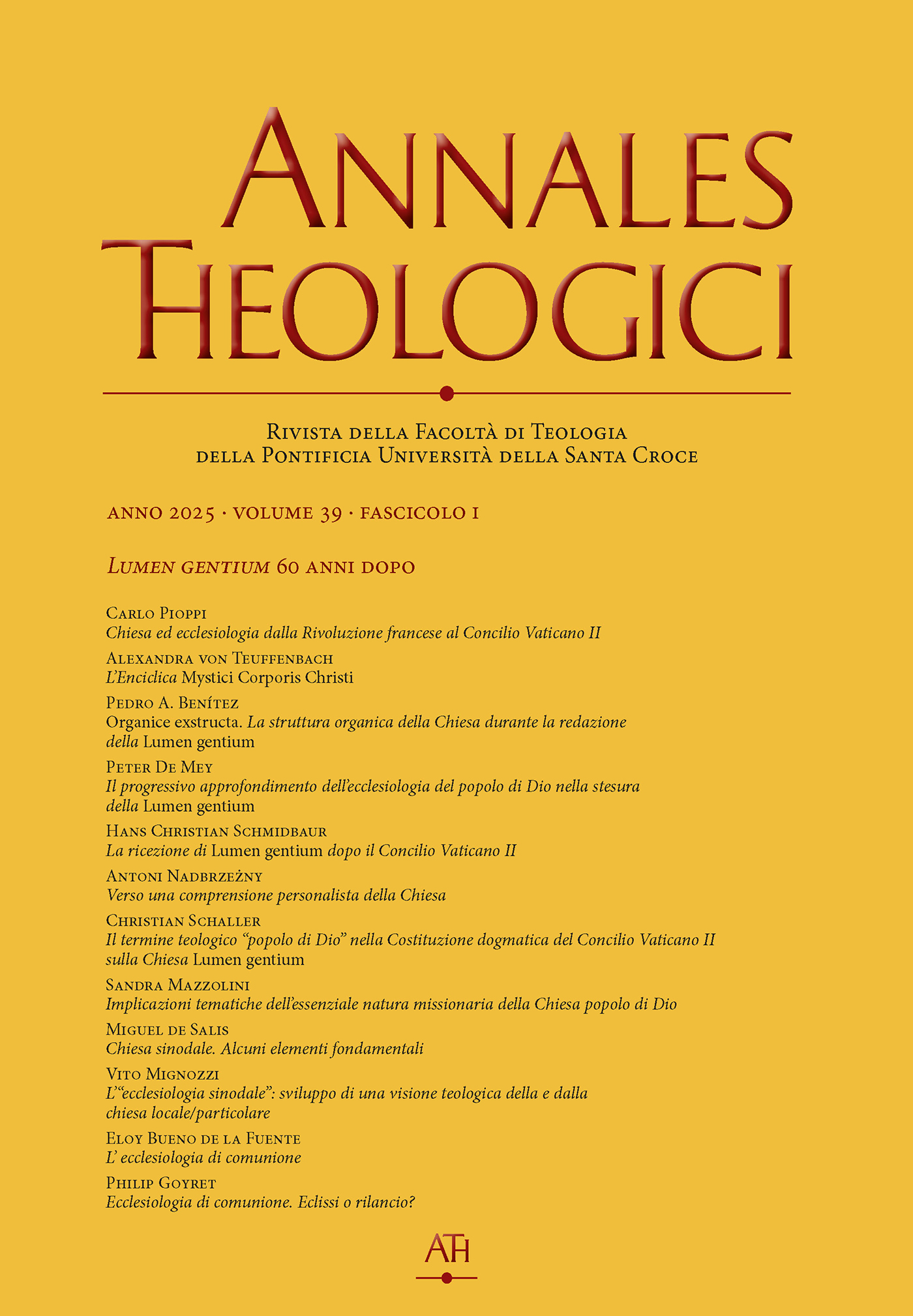Church and Ecclesiology from the French Revolution to the Second Vatican Council
DOI:
https://doi.org/10.17421/ATH391202501Keywords:
Ecclesiology, 19th and 20th centuries, Societas Perfecta, Ultramontanism, School of Tübingen, Body of Christ, People of GodAbstract
This article seeks to broadly trace the trajectory of ecclesiology between the French Revolution and the Second Vatican Council. There are two parallel lines of theological production on the Church in this interval of time. One line is that of handbooks and treatises, with an overall juridical and apologetic approach: this line is strengthened in the second half of the nineteenth century, thanks to the development of the depiction of the Church as societas perfecta et inaequalis; and thanks also to the affirmation and defense of papal authority in ultramontane circles. The other line is represented by several authors of monographs: innovative approaches are found in them. These approaches consisted of the rediscovery of the Church as a living organism guided by the Holy Spirit and inserted into history; the use of new categories to present the Church, such as the body of Christ and the people of God; the explanation of the Church as an original sacrament; reflection on the relationship between the Church and the Eucharist; and the emergence of theological studies on ecumenism and the laity. None of these new approaches came to be dominant. Still, this entire process enabled theology on the Church to arrive at Vatican II with a great wealth of proposals, content, and methodologies.








